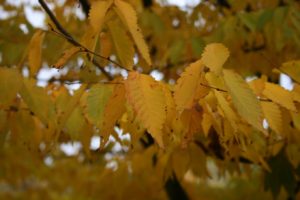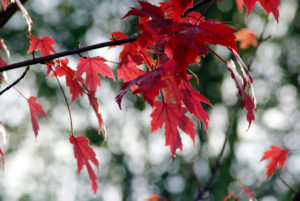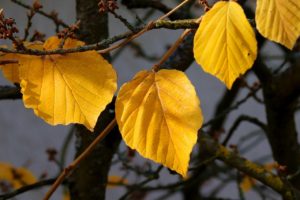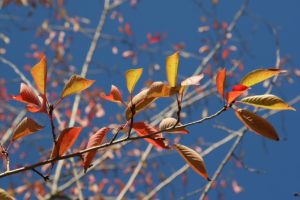THE LEAFLET
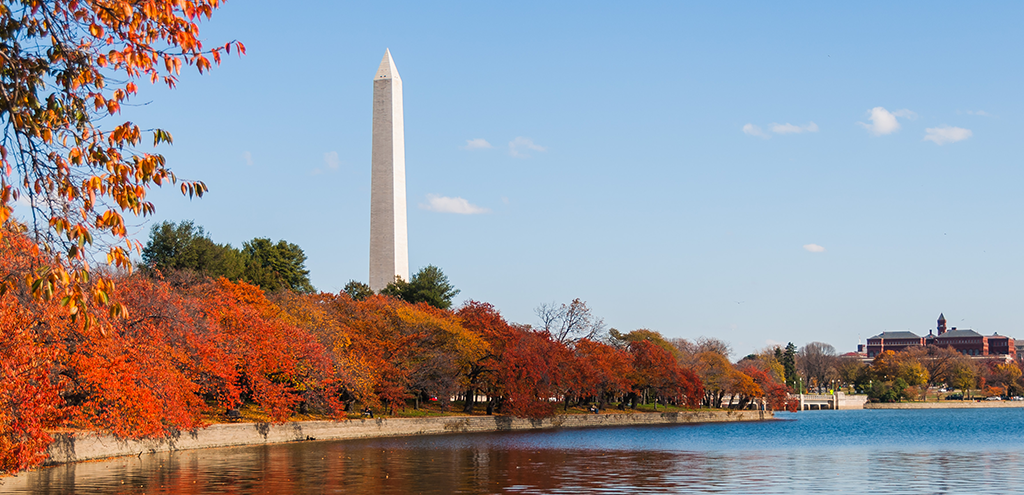
Five Fall Trees to ID (OR Plant for Free)
With no humidity in sight and temperatures dropping that means one thing: Fall has finally come to the District! Lucky for us fall brings something other than pumpkin flavored everything – foliage! Leaves changing colors and dropping (or not!) makes it even easier to identify trees around you. Take a look at these five (if you’ve already mastered the original five) and see if you can spot these showy trees around the District. A big fan of foliage? Most of these are available for planting through our residential planting programs. Plant one yourself or have us do it – either way you get to enjoy the gorgeous fall colors.
Japanese zelkovas are an extremely tough shade tree that was used in many cities as a replacement for the American elm when it was ravaged by disease from the 1950s – on. With a classic vase shaped crown, zelkovas cast abundant shade on yards where it is planted. As the tree ages, the outer bark is gray-brown and often exfoliates exposing an orangish inner bark. Medium green leaves turn to shades of yellow, orange, brown, deep red to reddish-purple in fall. Zelkovas require full sun, and will attain 40 feet in height over 40 to 60 years. You can get up to $50 back for planting this tree yourself through our tree rebate program.
Seemingly the royalty of fall foliage, Red Maples are also one of the most popular trees planted. They’re coveted for their brilliant fall color, ability to withstand challenging soil conditions and their seeds which fall “helicopter-like” to the ground. Red maples prefer full sun, and can reach 40 feet in approximately 30 to 40 years. This tree is available through our residential planting program, RiverSmart Homes. You can also get up to $100 back for planting this tree yourself through our tree rebate program.
The sassafras bark and roots were once used (and perhaps still are) for medicines, tea, and root-beer. Leaves are generally mitt-shaped but variable in form, turning yellow and purple in fall. Female trees have attractive spring flowers and blue-black berries (drupes) in the fall. In full sun to partial shade, the sassafras will grow to 40 feet in height in 30 – 40 years. You can get up to $100 back for planting this tree yourself through our tree rebate program.
Witch hazel is an excellent understory tree that produces fiery-yellow, fragrant flowers that stand out in the fall and winter. Another standout? Its attractive foliage in all growing seasons with leaves that are bright green in spring and turn yellow to yellowish-orange colors in fall. The extract witch hazel is distilled from the bark of young stems and roots. Grown in full sun or partial shade, witch hazel will reach 20 feet in height in 20 to 30 years. You can get up to $100 back for planting this tree yourself through our tree rebate program.
Of all the flowering cherries, the Yoshino is perhaps the most famous in D.C., adorning the Tidal Basin and other monuments with beautiful white-to-pink flowers. But did you know its wide and open crown turns orange-red in the fall? A true landscape tree, Yoshino Cherries rarely reach 30 feet tall and require full sun. Get up to $50 back for planting this tree through our tree rebate program.
